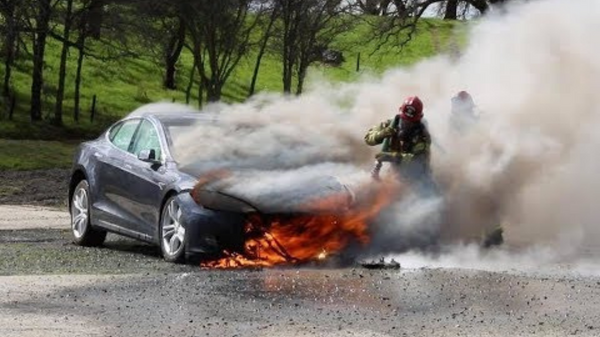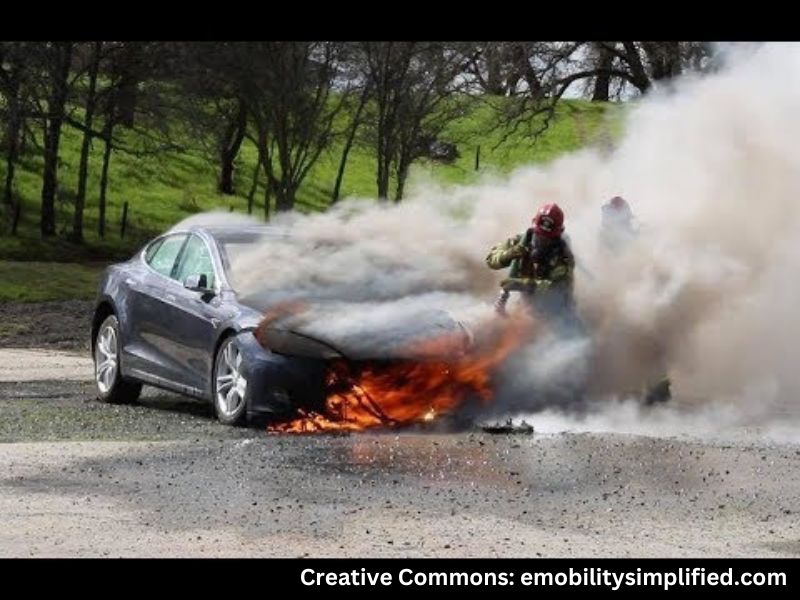YOU SHOULD SUBSCRIBE TO CLIMATE CHANGE WEEKLY.
IN THIS ISSUE:
- Green Technologies Are Dangerous, Not Ready for Prime Time
- Podcast of the Week: The Dark Side of Offshore Wind Power: How It’s Destroying Both Pocketbooks and the Environment (Guest: David Stevenson)
- Corals Show No Sign of Long-Term Decline Amid Warming
- Cold Waves Increasing in India
- Video of the Week: Climate Change Roundtable TODAY at noon CT
- BONUS Video of the Week: Wind Power Fails
- Climate Comedy
- Recommended Sites
Green Technologies Are Dangerous, Not Ready for Prime Time

I have written before about the known dangers green energy technologies pose to human health and life. In last week’s CCW I discussed a potential problem of which I was previously unaware: the micro-plastics/composite waste and chemical leaching of resins from wind turbines as they shred and chip over time.
In a previous CCW I discussed the hazards caused by lithium ion batteries, the motive force of electric vehicles (EVs), modern rechargeable electronics, and the battery farms used to provide electric power in some locations for some uses, usually as a backup to wind and solar power. The batteries overheat, catch fire, or explode far too often. This happens even when the batteries are not in use. It’s never convenient for your car, cell phone, or scooter to catch fire, but it’s even less convenient when something bursts into flames or explodes on a plane or in your garage and burns its surroundings down.
With the recent spate of articles discussing fires caused by EV batteries and atop wind turbines, it seems the mainstream media is only now catching on to what we at The Heartland Institute, the airlines, and actual green technology users have long reported: green tech can be dangerous.
For instance, a recent NBC News story reported on a July 2022 incident in which a transit bus in Connecticut spontaneously burst into flames while parked (I reported on it at the time) and an apartment fire sparked by an electric scooter which killed a five year old girl and a 36 year old woman, among other incidents. Lithium-ion batteries were identified by fire marshals as the cause of more than 200 fires in New York City in 2022 alone, killing six people and injuring nearly 150.
The problem is worse than that. It is not just that the batteries powering EVs randomly burst into flames. An additional problem is that they spew toxic fumes when they do, making them even harder to extinguish, even when fire departments are adequately equipped to do so, which many aren’t.
On this point, the NBC News reporters write,
“The source of the gasses that are creating the flames is confined within a cell battery that will not allow water in,” said Ofodike Ezekoye, a fire scientist and professor of mechanical engineering at the University of Texas at Austin. “When firefighters are responding to these types of incidents, it takes a lot longer to be able to control the fire because it requires so much more water.” …
Hunter Clare and Justin Lopez, who work for the fire department in Peoria, Arizona, have firsthand experience of the hazards.
In April 2019, the two fire captains responded to a call at a facility that was housing thousands of lithium-ion batteries used to store energy for a power grid. The batteries are critical components in such facilities that store solar energy.
Clare and Lopez arrived along with other first responders to find a white cloud of vapor seeping out of the building and drifting across the desert.
“It was staying about 3 to 4 feet off the ground, and it was kind of swaying like sea water,” Clare said.
The firefighters suspected that it was some kind of chemical cocktail. They secured the area and used special devices to test the air, which showed dangerous levels of hydrogen cyanide and carbon monoxide.
Then they waited until the vapors stopped flowing out of the building and the levels of flammable gas dropped. Nearly two hours passed before the firefighters made their way to the front door of the facility. When they opened it, a large cloud escaped the building. Before they could retreat to safety, the space ignited, setting off a powerful explosion.
Coming to a location near you: dangerous fires allowed to burn for more than two hours, belching toxic gases and producing secondary explosions. Hope your local fire departments are prepared.
When EV batteries aren’t burning down homes, businesses, and apartment blocks or making people sick, wind turbines are exploding, collapsing, and burning, threating the lives of people hundreds of yards away from the source of a problem.
Whatever could I be talking about, you ask? Just this: wind turbines are self-destructing with ever-greater frequency. When the nacelles and blades aren’t exploding, tossing dangerous chunks of debris hundreds of yards in every direction—a hazard that has been recognized for some time and captured in numerous videos—they are catching fire or, more recently, simply collapsing, as turbine size and power have grown with limited time allotted for testing of structural integrity before deployment. The turbines were most likely tested using computer model simulations, and my readers know how reliable those are.
Some in the media are finally taking notice. IEEE Spectrum recently ran a story titled “Wind Farm Fires Far More Common Than Reported, Study Finds.” The writers reported on a study that found, “Fires in wind turbines are happening ten times more often than they are reported, according to new research from Imperial College London, the University of Edinburgh and SP Technical Research Institute of Sweden.”
As big wind companies Siemens and GE report multiple billions of dollars in losses in their wind energy divisions caused by unexpectedly high replacement and warranty costs, the news website HITC reports giant wind turbines are falling over at increasing rates. The report indicates newer, larger, more powerful but less-tested turbines are collapsing in unanticipated numbers all around the globe.
“The push to create larger and more powerful wind turbines has led to manufacturing challenges across the wind power industry, Bloomberg reports,” HITC notes.
It seems the old adage is true: the bigger they are, the harder (and more frequently) they fall.
It should go without saying, but I’ll say it anyway: large wind turbines exploding, catching fire, or collapsing under their own weight pose serious safety hazards to landowners, employees, passersby, and the general public in the vicinity of these industrial wind projects—which is a growing number of people because of President Joe Biden’s big push to build more wind, faster, everywhere.
Green hydrogen has a dark side as well, although it doesn’t get as much attention as wind facilities and EVs, being a much smaller though growing segment of the green energy marketplace. There has been limited coverage of the fact hydrogen fueling stations and the vehicles transporting hydrogen fuel have been exploding.
Fueling stations in Norway and California have both exploded in recent years. An explosion at a hydrogen fuel plant in Longview, North Carolina damaged homes and vehicles miles from the plant. An explosion in Norway caused air bags to deploy in cars on the nearest roads, sending at least two drivers to the hospital. Hydrogen is a very flammable gas, so it requires special handling and precautions in how it is transported, where it is stored, how vehicles are fueled, and its growing use for transportation.
To be fair, fossil fuel-powered vehicles and fueling stations and refineries can and do explode on occasion. However, many years and billions of dollars have gone into making them as safe as possible. The question now is whether we are spending enough time and money on testing and ensuring the safety of hydrogen fuel cell infrastructure and hydrogen vehicles, as we did for gasoline and diesel vehicles, or even as much as is being spent to force the rapid acceleration of the use of such technologies and vehicles as a means of fighting climate change.
Whether it is ever-bigger wind turbines, hydrogen fuel technologies, or increased use of EVs and battery power plants with provably combustible batteries, we have a moral duty to reduce the risks of premature or expanded and expedited deployment before undertaking a grand, dangerous experiment with the public. Any government should at least be open and honest about the potential dangers before pushing them on an unaware populace, to allow people to make informed choices.
Objective data reveal no evidence climate change is causing a crisis today. That means we have time to get the tech right. Regardless of whether that means better versions of existing so-called green energy technologies or entirely new, currently undiscovered energy sources, there is no pending climate apocalypse to justify the hasty deployment of energy technologies known to be unsafe, often for unexplained reasons.
Let’s not cause real deaths and destruction today to prevent phantom climate risks tomorrow.
Sources: NBC News; HITC; IEEE Spectrum





